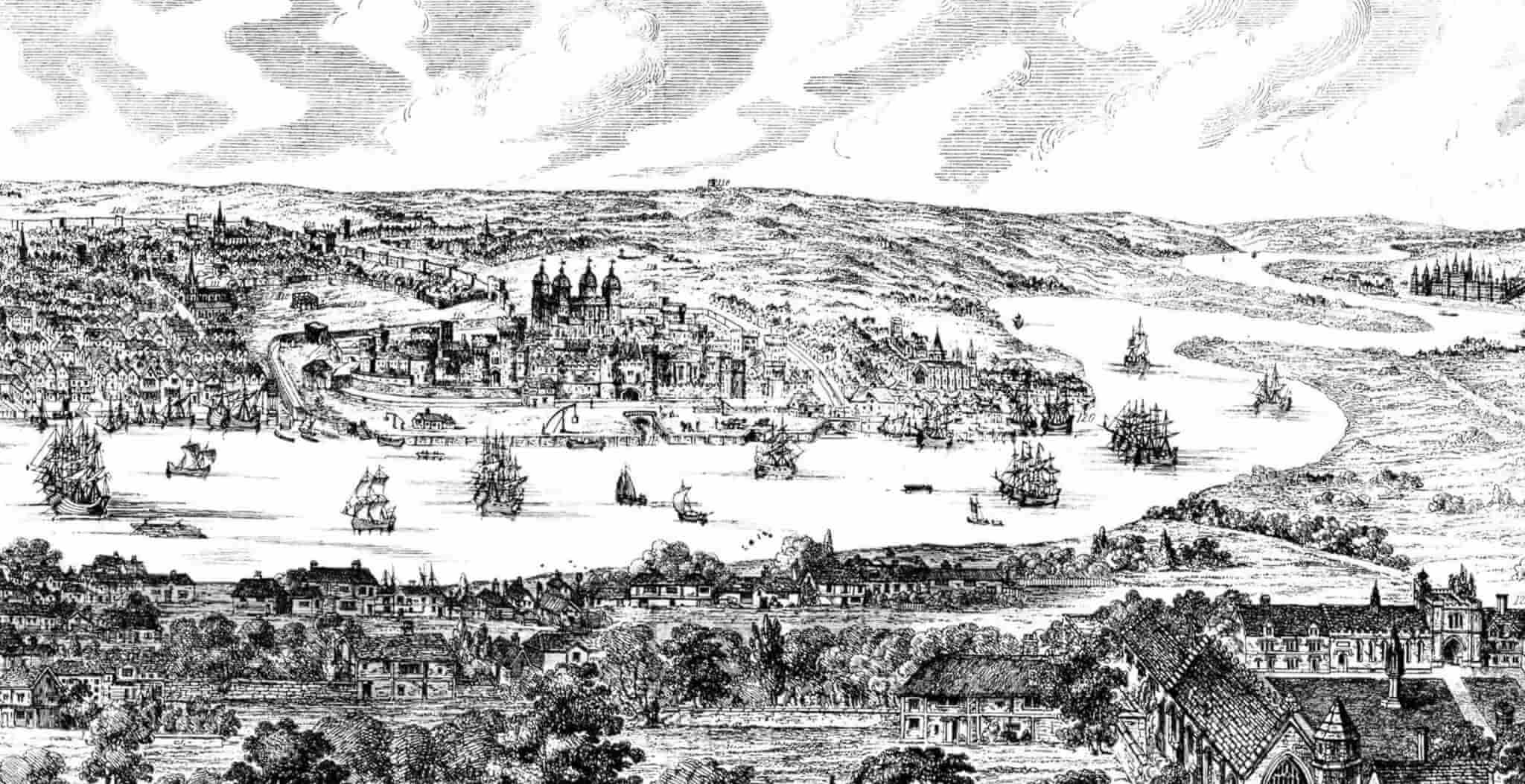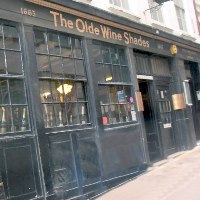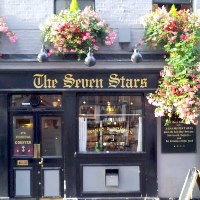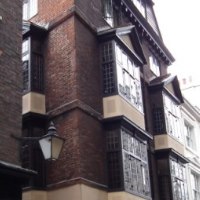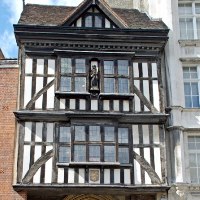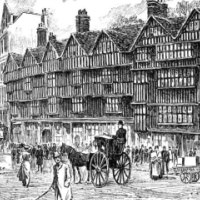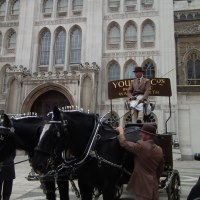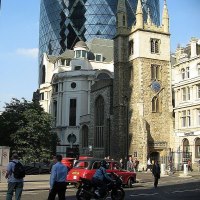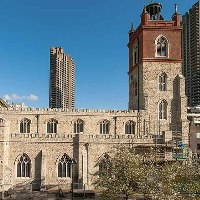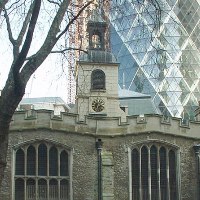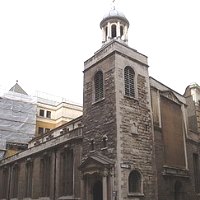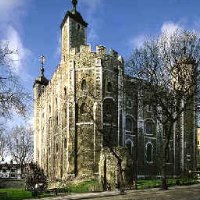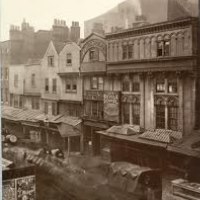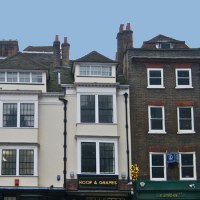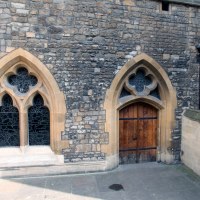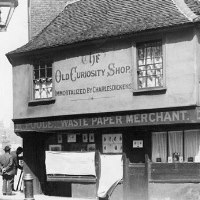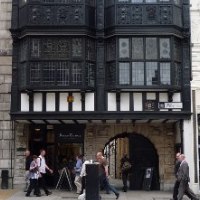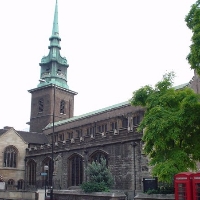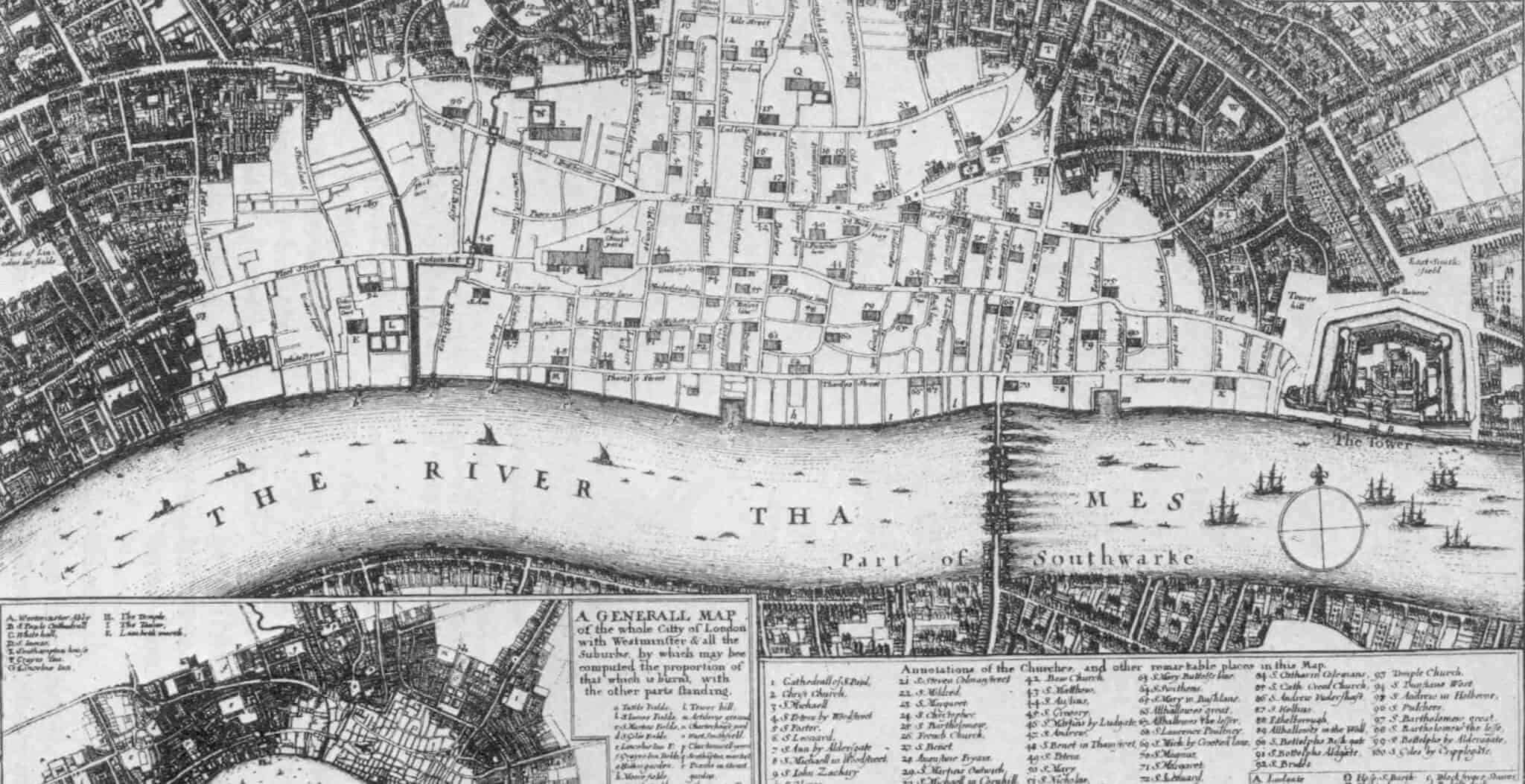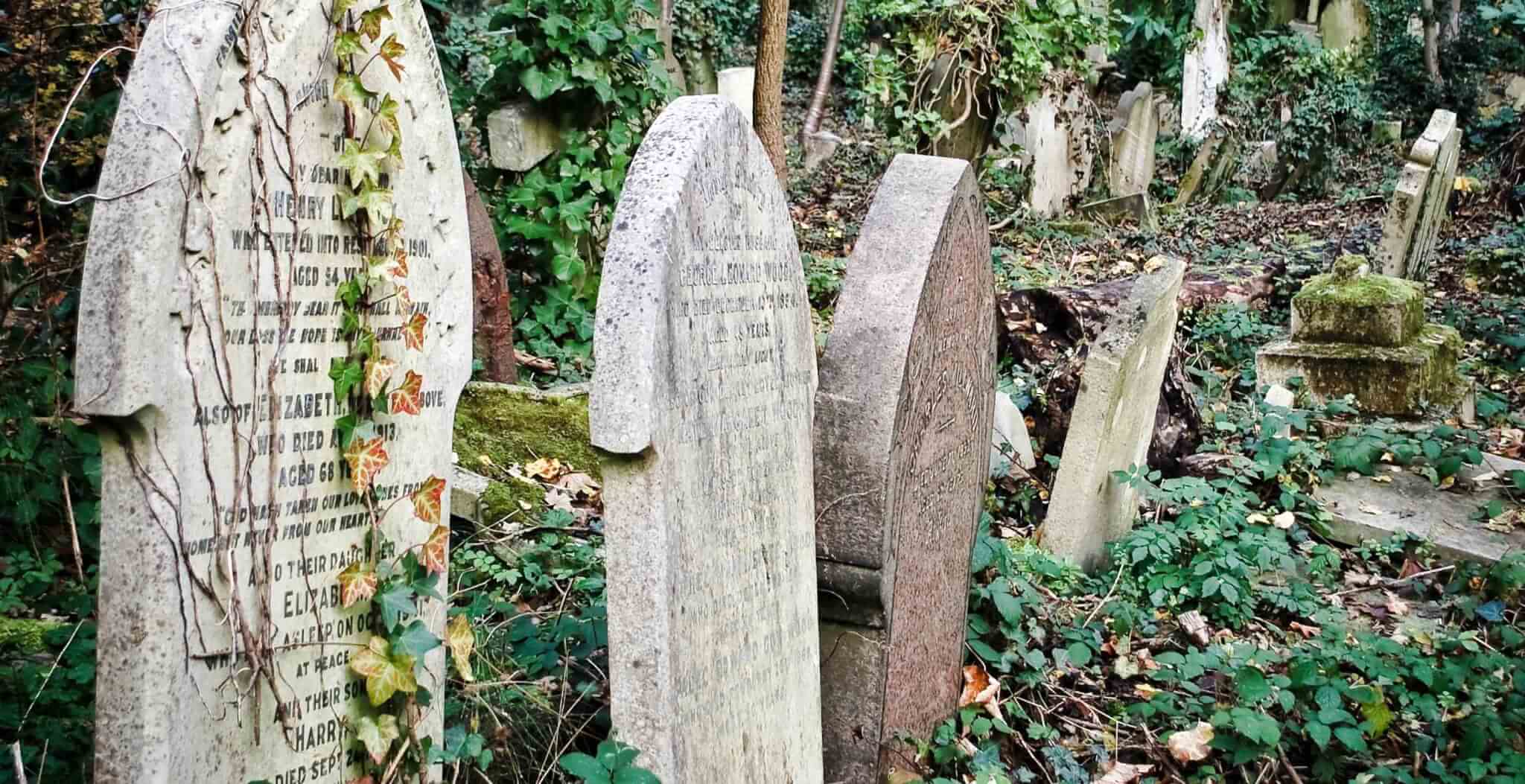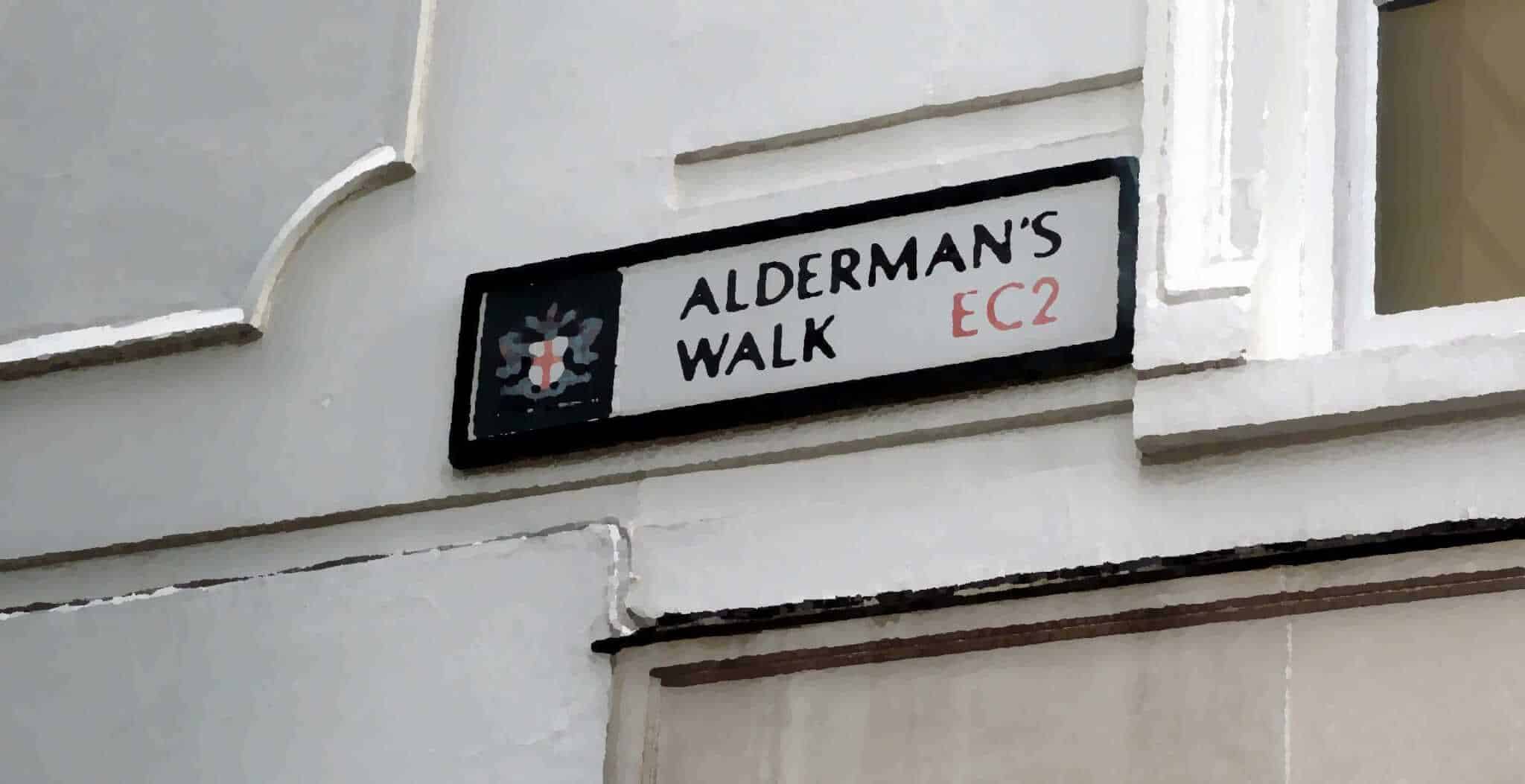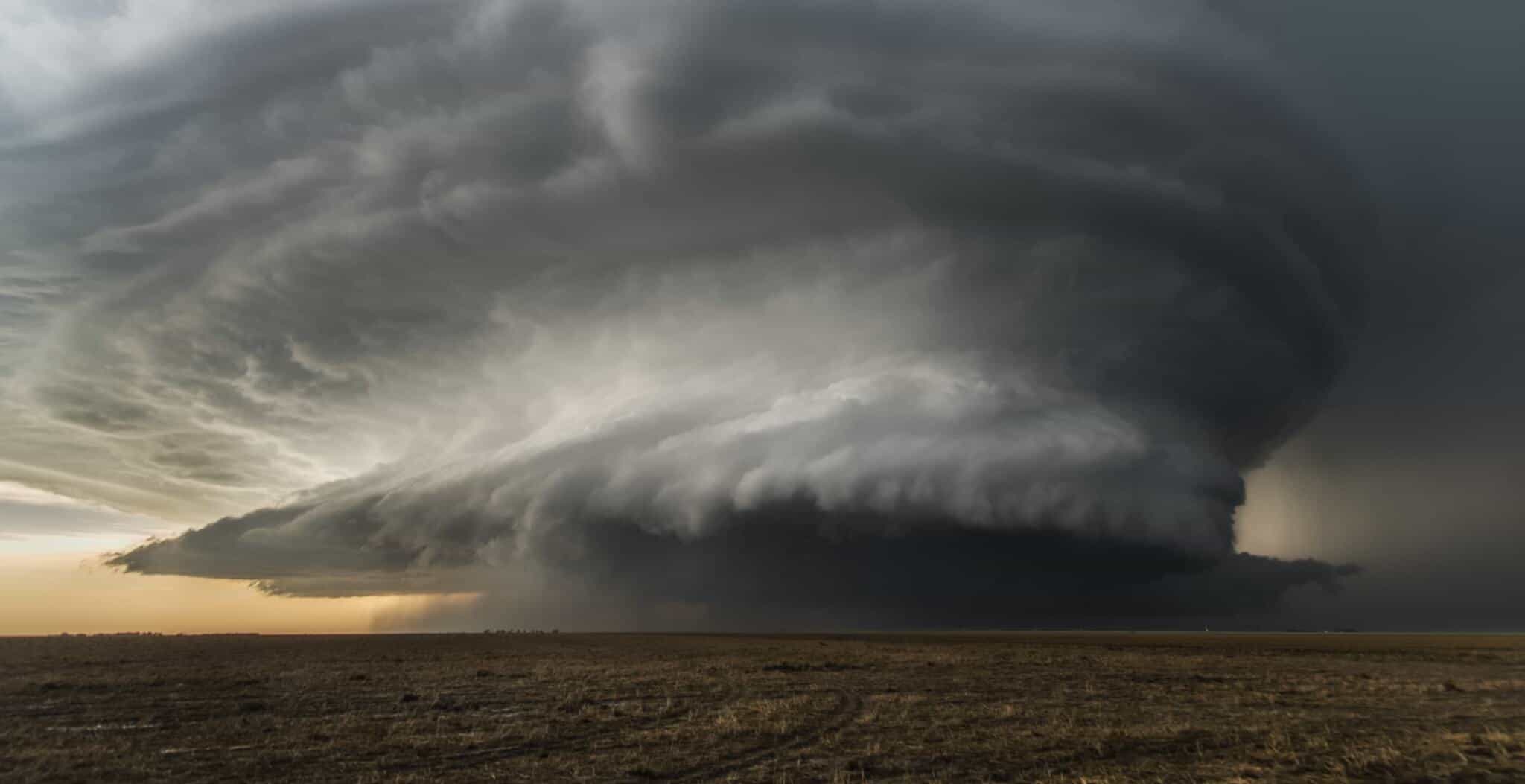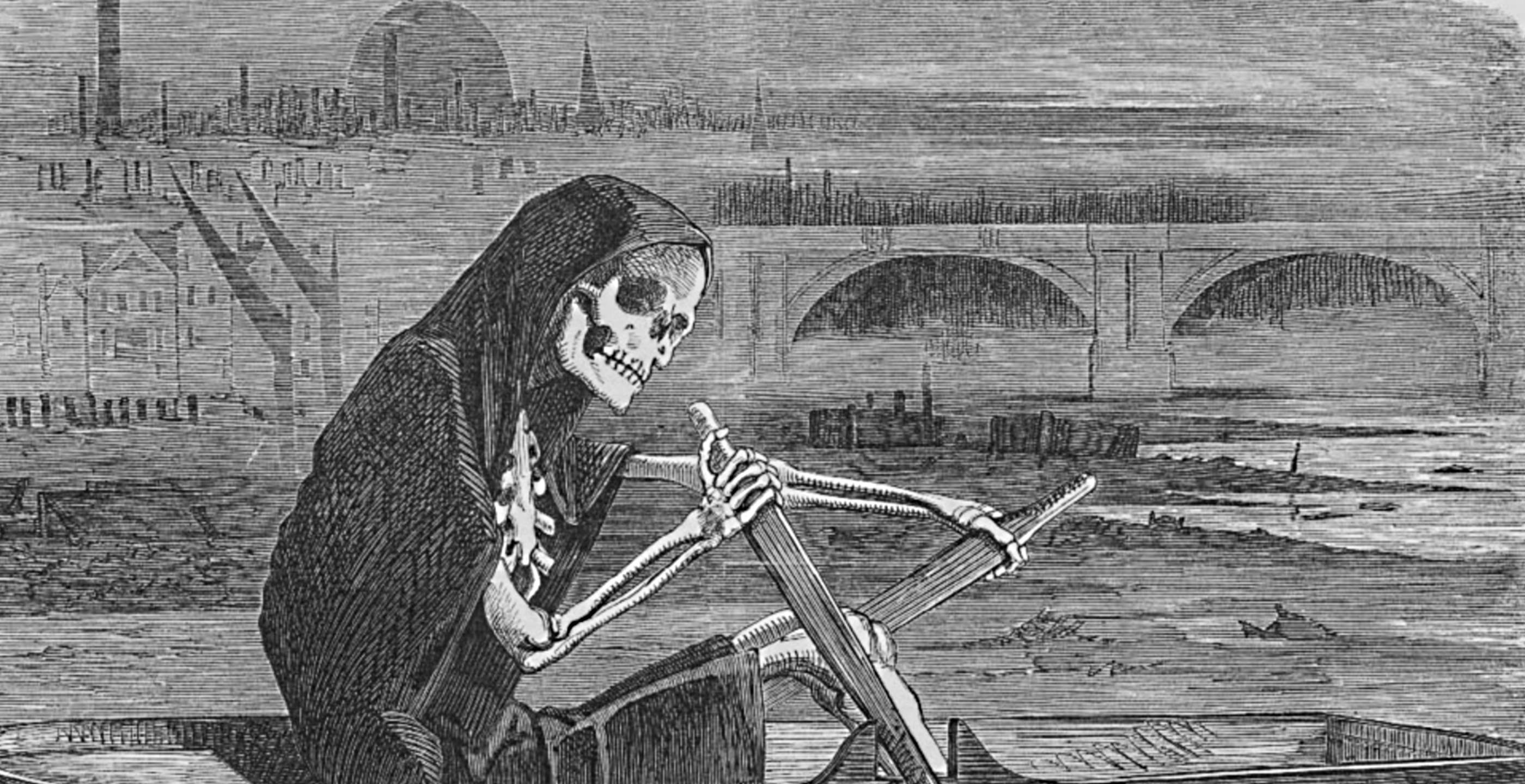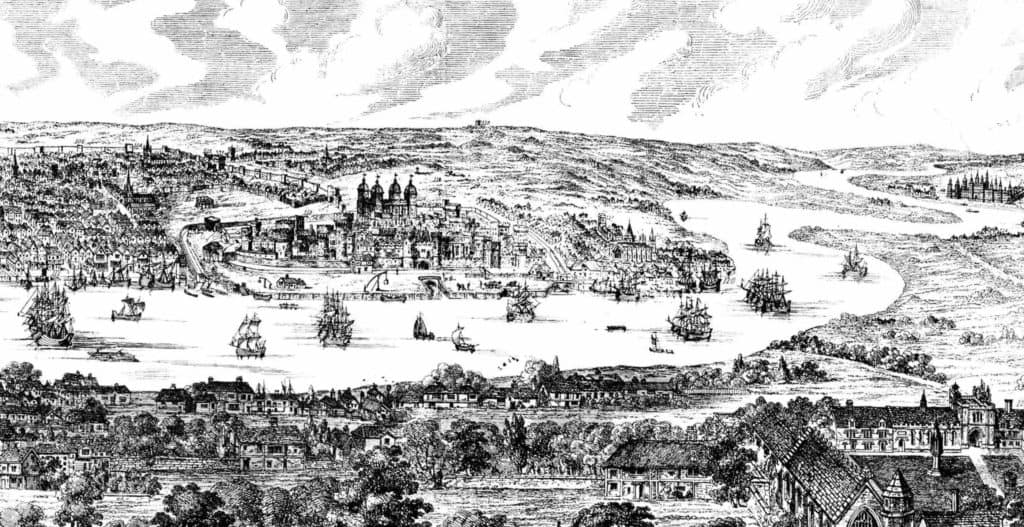Although the Great Fire of London destroyed over 13,000 houses, almost 90 churches and even the mighty St Paul’s Cathedral, a handful of survivors managed to escape the flames and can still be seen to this day.
Before we look at where these resilient old buildings are located, it’s useful to see how much of London the Great Fire actually destroyed. The map below shows a modern City of London, with the highlighted section showing the extent of the Great Fire. We have used Wenceslaus Hollar’s famous map of 1666 as our main source.
As you can see, the fire destroyed almost everything within the old City limits, leaving only a small portion of the north east unscathed. From the Tower of London to Holborn and the start of the Strand, almost nothing survived.
In fact, out of the 13,000 buildings that were destroyed, we've only been able to pinpoint eighteen pre-fire buildings that can still be seen today. These are:
The Olde Wine ShadesPub (Now a wine bar), built in 1663 Once a favourite haunt of Charles Dickens, this historic pub was built in 1663 and even features an old smuggling tunnel leading down to the River Thames! Unfortunately there is limited information on how it managed to escape the Great Fire, especially curious as the pub is located just a few streets away from Pudding Lane. |
|
The Seven StarsPub, built in 1602 The Seven Stars was located just beyond the western limit of the Great Fire and therefore managed to escape with just a scorch mark or two. Although the inn has been through numerous renovations throughout its 400 year history, it is still full of character and charm. |
|
41 Cloth FairThe oldest house in the City, built between 1597 - 1614 This historic townhouse was shielded from the fire by the priory walls of nearby St Bartholomew's. For more information please click here for our full article. |
|
St Bartholomew's GatehouseGatehouse, built in 1595 Although this timber framed building dates back to the 16th century, the stonework below it is part of the original nave of St Bartholowmew's Priory from the 1200s. Much like 41 Cloth Fair, the structure was protected from the Great Fire by the large priory walls, although during the Georgian era the timber facade was covered by modern frontage. It was only during World War 1 bomb damage that the original gatehouse was rediscovered, and it was restored to its present glory in 1932.
|
|
The Staple InnMulti-use building, built in 1585 Having only just escaped the Great Fire by a few metres, Staple Inn stood intact until a Luftwaffe bombing in 1944 which damaged some of the structure. Due to its historic value it was subsequently restored, and is now a listed building and home to the Institute of Actuaries. |
|
The GuildhallCity Hall, built in 1411 The Guildhall did not escape the Great Fire unscathed; a large restoration project began in 1670 during which the entire roof had to be reconstructed from scratch. Even so, the majority of the building is still as it would have been during the 15th century. As a side note, if you're visiting the area be sure to look out for the old Roman amphitheatre which is on display in the Guildhall's basement. |
|
St Andrew UndershaftChurch, built in 1532 Presumably surviving the Great Fire of London through its sturdy stone structure, St Andrew Undershaft also avoided any significant bomb damage during World War Two. Unfortunately it was damaged by an IRA attack in 1992 which destroyed its fantastic medieval stained-glass windows. |
|
St Giles-without-CripplegateChurch, built in 1394, 1545 and 1682 The clue to why St Giles-without-Cripplegate survived the Great Fire is hidden within its name; 'without' means 'outside' of the old city walls! The church was gutted during World War Two, but was reconstructed using the original plans from 1545. |
|
St Helen's BishopsgateChurch, built in the 12th century The largest surviving church in the City of London, St Helen's was also the local parish church of William Shakespeare during his time in the area. |
|
St Katharine CreeChurch, built in 1631 (tower from 1504) Although the church was damaged during the Great Fire of London, enough of the structure remained to provide a temporary 'soup kitchen' to the local workers who were rebuilding the city. |
|
The Tower of LondonCastle, built in 1078 Protected from the fire by its large curtain walls, the White Tower was completely untouched by the flames. |
|
74 - 75 Long LaneHouse, built in 1598 Much like the houses on Cloth Fair, Long Lane was protected from the flames of 1666 by the priory walls of St Bartholomew's. The two remaining 16th century structures are now at number 74 and 75, although their facades date from the Victorian and Georgian eras respectively. |
|
The Hoop and GrapesPub, built in the late 16th century Although the exact date of its construction is unknown, it is thought that the Hoop and Grapes was built in the late 1500s and avoided the Great Fire of London by being situated in the relatively untouched north-eastern corner of the City limits. The two buildings adjacent to the pub are also pre-1666 survivors. |
|
St Etheldredas ChurchChurch, built in the late 13th century St Etheldredas is one of the oldest buildings in London, and is one of only two structures that date from King Edward I's reign. It was once the chapel of Ely Palace, a massive estate that housed the Bishops of Ely from 1290 to 1772. |
|
The Old Curiosity ShopShop, built in 1567 Built in the mid-16th century and featured in Charles Dickens' 'The Old Curiosity Shop', this ancient building was actually located quite a few streets away from the Great Fire's limits but is included in our list due to its quaint facade and literary connection! |
|
Prince Henry's RoomTownhouse, built in 1610 Until recently a museum, Prince Henry's Room is a striking timber building sitting above the entrance to Inner Temple Lane. During the 1600s it was a tavern known as the Fountain Inn, and was visited by Samuel Pepys in 1661 of which he wrote "to the Fountain tavern and there stayed till 12 at night, drinking and singing". Read our full article about Prince Henry's Room here. |
|
All Hallows-by-the-TowerChurch, rebuilt in 1658 Although a church has stood on this site since 675, the current exterior of All Hallows-by-the-Tower dates back to 1658 when it was rebuilt following a nearby explosion. It is said that Samuel Pepys watched the progress of the Great Fire from its tower, which at that time was virtually brand new. There is also a fantastic 7th century Saxon arch with recycled Roman tiles in the church, some of the oldest surviving stonework in London. |
|
229 StrandTownhouse, built in 1625 Situated at the point where Fleet Street becomes The Strand, this rare example of a jettied timber framed townhouse was built in the early 17th century. Before the slum clearances of the late 19th century there would have been a series of similar pre-Great Fire buildings lining the Strand.
|
|
St Olave Hart StreetChurch, built in circa 1450 Saint Olave's church was miraculously saved from the Great Fire by Sir William Penn (father of William Penn, founder of Pennsylvania), who asked his men from the nearby naval yard to demolish the houses surrounding the church in order to create a firebreak. We would like to thank Geoffrey Michel who contacted us via email to let us know about the church's survival.
|
Have we missed any?
If you think we've missed any survivors of the Great Fire of London then please let us know!
Tours of Historic London
Find out more about this great city by browsing our Selected Tours of London.
